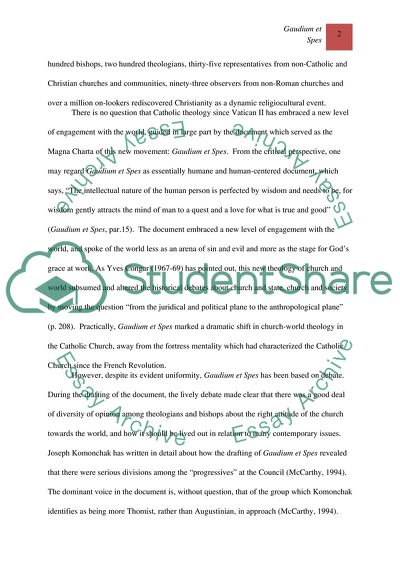Cite this document
(Gaudium et Spes Research Paper Example | Topics and Well Written Essays - 1250 words, n.d.)
Gaudium et Spes Research Paper Example | Topics and Well Written Essays - 1250 words. https://studentshare.org/religion-and-theology/1742952-gaudium-et-spes-church-in-the-modern-world
Gaudium et Spes Research Paper Example | Topics and Well Written Essays - 1250 words. https://studentshare.org/religion-and-theology/1742952-gaudium-et-spes-church-in-the-modern-world
(Gaudium Et Spes Research Paper Example | Topics and Well Written Essays - 1250 Words)
Gaudium Et Spes Research Paper Example | Topics and Well Written Essays - 1250 Words. https://studentshare.org/religion-and-theology/1742952-gaudium-et-spes-church-in-the-modern-world.
Gaudium Et Spes Research Paper Example | Topics and Well Written Essays - 1250 Words. https://studentshare.org/religion-and-theology/1742952-gaudium-et-spes-church-in-the-modern-world.
“Gaudium Et Spes Research Paper Example | Topics and Well Written Essays - 1250 Words”. https://studentshare.org/religion-and-theology/1742952-gaudium-et-spes-church-in-the-modern-world.


